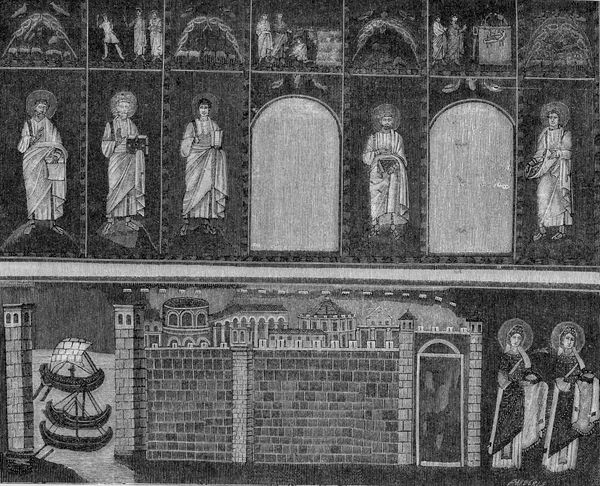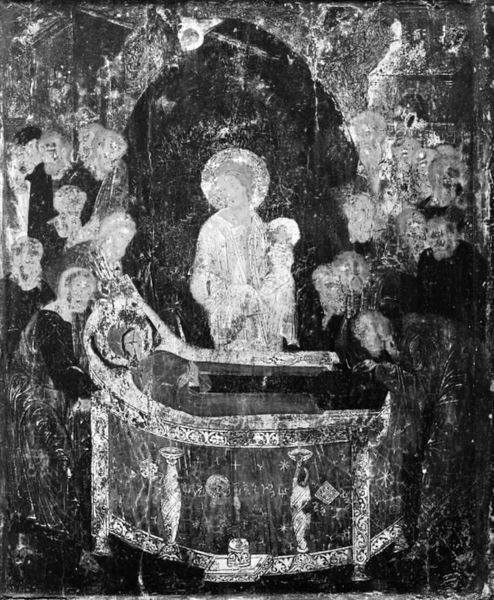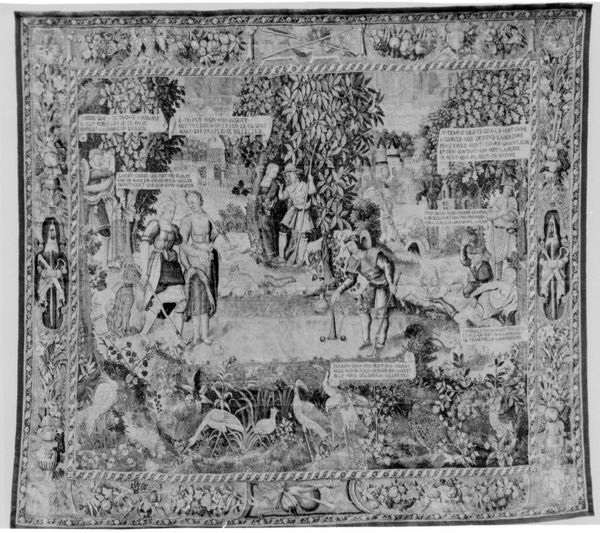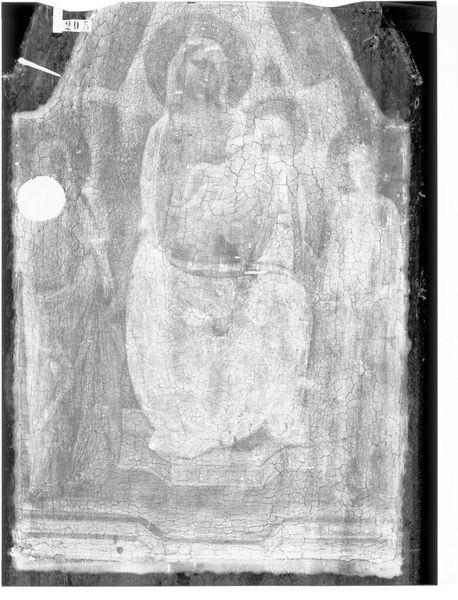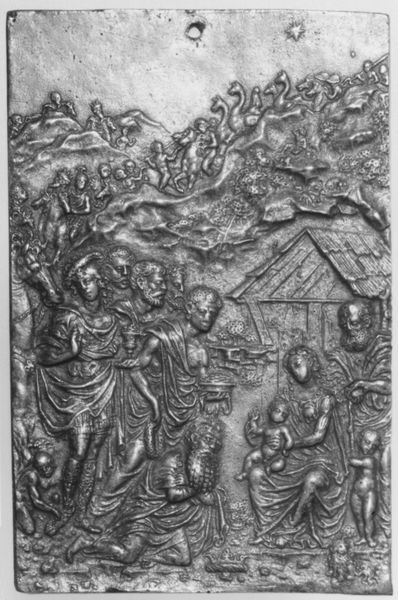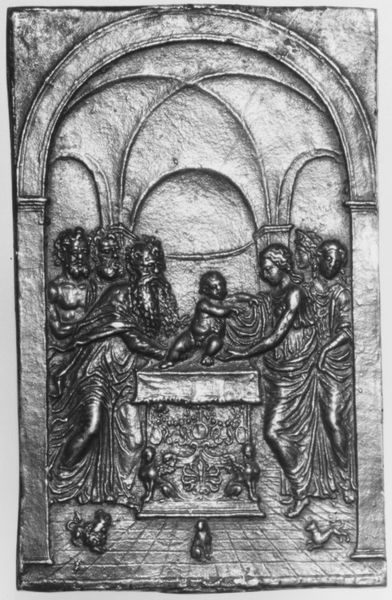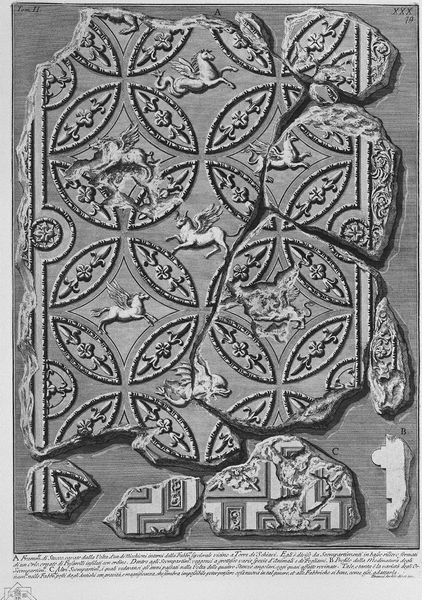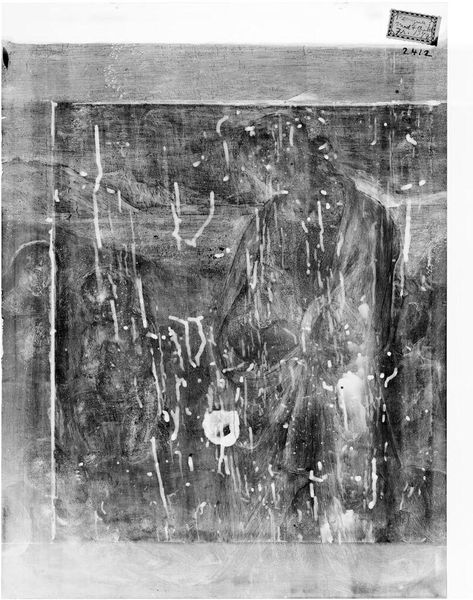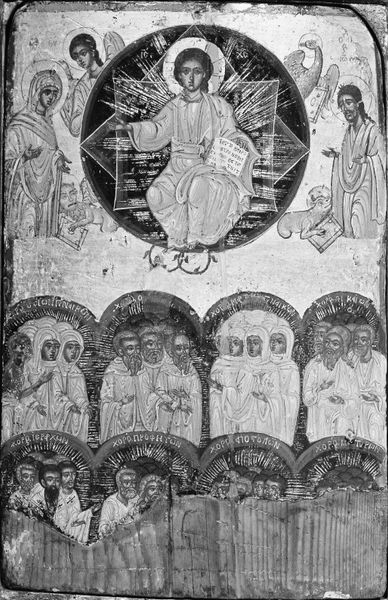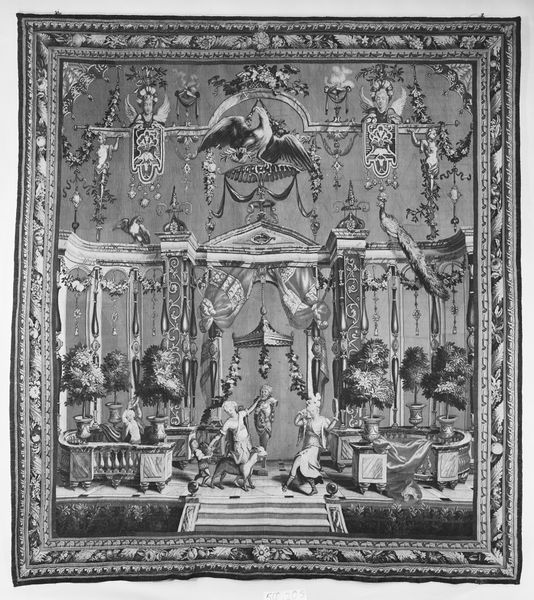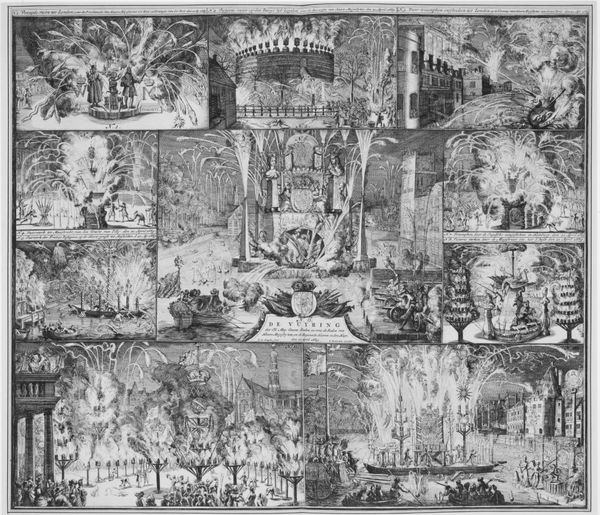
painting, fresco
#
byzantine-art
#
medieval
#
narrative-art
#
painting
#
sculpture
#
textured
#
figuration
#
fresco
#
history-painting
Dimensions: 50 cm (height) x 42 cm (width) (Netto)
Curator: The composition is dense and incredibly evocative of the late Medieval or early Renaissance period, perhaps made between 1501 and 1550. Editor: This work, titled *The Glorification of the Virgin Mary*, feels overwhelming in its detail. What narrative or symbolic layers am I missing? Curator: Think about the power structures of the time. What does it mean to glorify a woman, specifically, within a patriarchal, religiously dominated society? What purpose does that serve? Editor: So it’s not just about religious devotion, but about power dynamics too? Is it about maybe providing a…counterpoint, or some kind of idealized figure within the dominant power structure? Curator: Precisely. The artist uses Byzantine artistic traditions, seen in the rigid forms and hierarchical arrangement, to reinforce existing social orders, but perhaps also subtly subverts them. The Virgin Mary as a figure of both spiritual authority and, perhaps, female empowerment? How might her image here reflect, or challenge, the lived experiences of women during that era? Editor: The multiple scenes surrounding the central glorification—do they depict events from Mary’s life, offering a complete narrative meant for didactic purposes? Or, does the painting create its own internal social commentary? Curator: Both, perhaps. This work becomes a mirror reflecting the complexities of the time. Are there specific figures or scenes that you feel drawn to? Consider what stories they might be telling about societal roles and expectations. Editor: This reframes the painting for me, and lets me look beyond face value into what other aspects it suggests of the social issues and positions of the time! Curator: Absolutely, and keep exploring! Each artwork is an ongoing conversation between the past and the present.
Comments
No comments
Be the first to comment and join the conversation on the ultimate creative platform.
